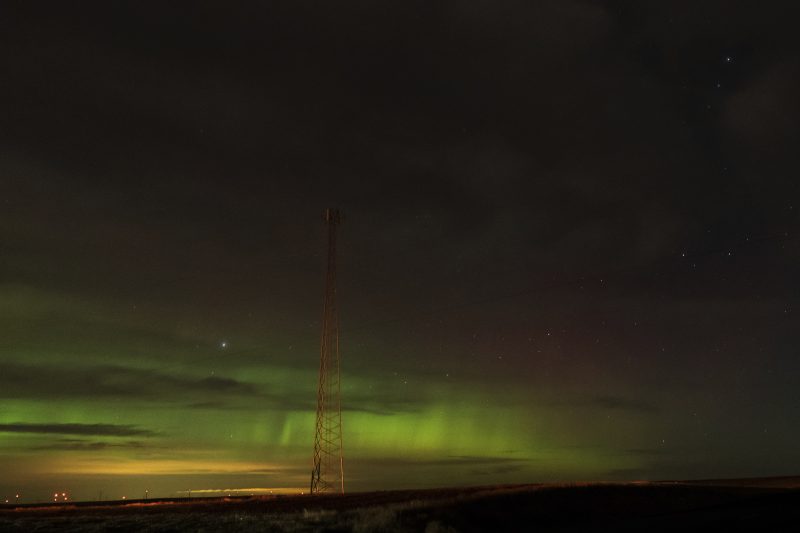(NEXSTAR) Northern U.S. states from New York to Washington and potentially Iowa could see the Northern Lights on Sunday, according to current forecasts.
In an alert issued Sunday morning, NOAA’s Space Weather Prediction Center warned of a moderate geomagnetic storm, triggered by an Earth-directed coronal mass ejection, or CME.
CMEs are explosions of plasma and magnetic materials from the sun that can impact navigation, communications and radio signals on Earth. They are also capable of causing northern lights by creating currents in Earth’s magnetic fields that send particles toward the North and South Poles, which then interact with oxygen and nitrogen, according to NASA.
The current Earth-directed CME was triggered by a filament flare on Friday, the SWPC says. This is expected to affect us Sunday evening, causing G1 level geomagnetic storms (the lowest level on the five-point scale). G2 storms are likely for Monday.
Current SWPC forecasts show that Canada and Alaska, covered in red in the image below, have the highest probability of seeing the Northern Lights on Sunday. NOAA predicts that the southern extent of the aurora shown by the red line in the image below could reach northern Nebraska and central Iowa.
This means residents of Washington, Northern Idaho, Montana, Northern Wyoming, North Dakota, South Dakota, Minnesota, Wisconsin, Northern Illinois, Michigan, parts of New York, Vermont, New Hampshire and Maine might also be lucky enough to see the aurora. .
While the SWPC expects stronger geomagnetic storms for Monday, the forecast is not as promising. Alaska and Canada still have a chance to see the Northern Lights, but the opportunity is slim for those in northern Montana, North Dakota, northern Minnesota, northern Wisconsin and Michigan’s Upper Peninsula .
However, the SWPC reported Friday that in addition to the Earth-directed CME, a coronal hole high-speed stream, or CH HSS, had been spotted on the sun. Like CMEs, a CH HSS can cause geomagnetic storms on Earth reaching G1 or G2 levels, which could, in turn, trigger more aurora borealis.
This CH HSS will likely affect Earth between Wednesday and Friday, SWPC said. Aurora forecasts for these days will not be available until at least Tuesday (SWPC only shares forecasts for the current day and the next).
We could see even more Northern Lights in the coming months.
The sun reaches the peak of solar cycle 25, an 11-year period in which the sun reverses its magnetic poles, triggering space weather phenomena like CMEs and CH HSS. New forecasts show it could occur faster and be stronger than expected between January and October next year.
This could not only mean more appearances of the Northern Lights, with possibly more opportunities for people in the southern United States to view them, but could also have consequences for our infrastructure.
An added bonus of the current solar cycle? The total solar eclipse on April 8, 2024, will occur near the maximum cycle, which means a good show for skywatchers, NOAA says.
#Northern #lights #visible #states #Sunday #forecast #shows
Image Source : www.newsnationnow.com

